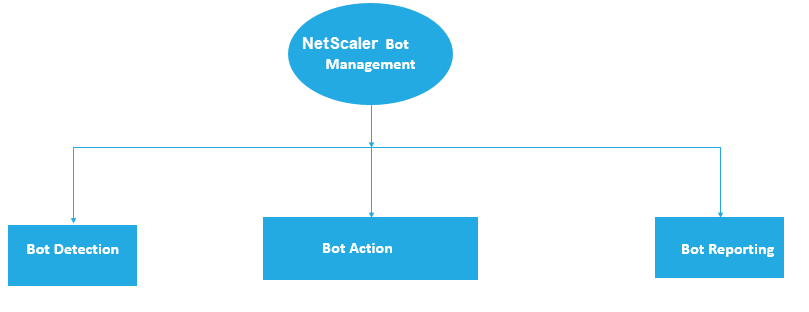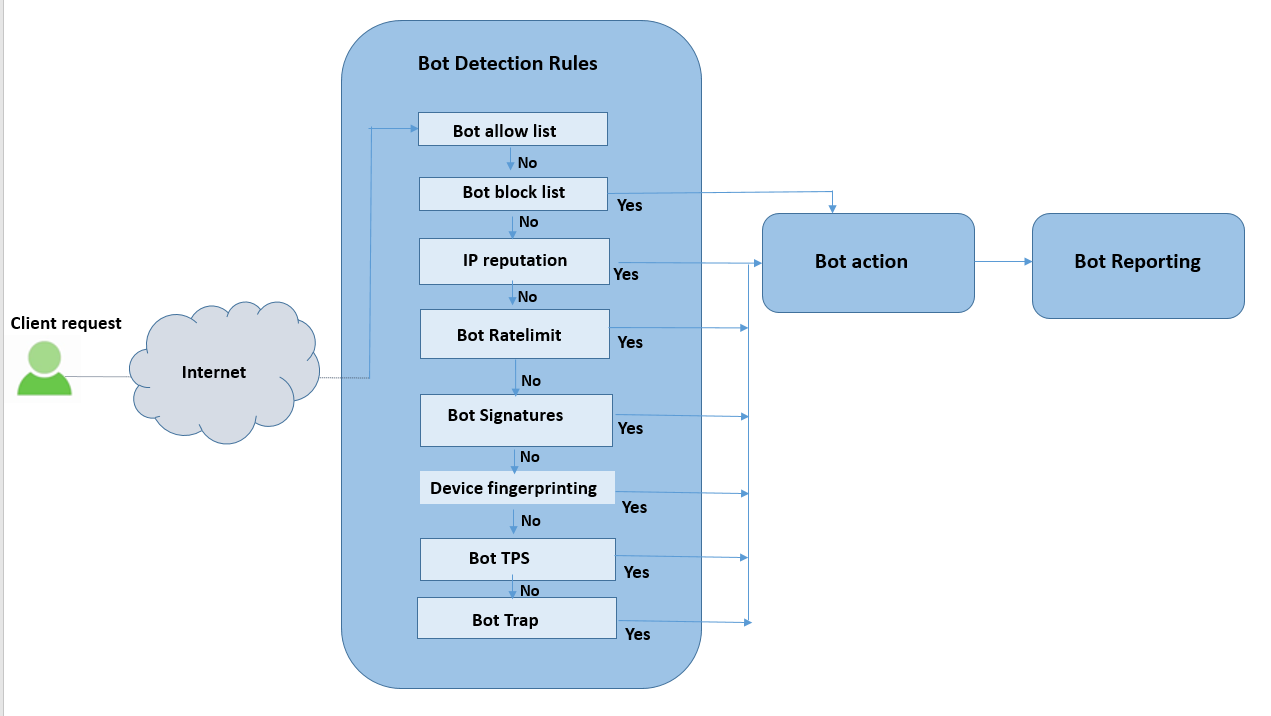-
Getting Started with NetScaler
-
Deploy a NetScaler VPX instance
-
Optimize NetScaler VPX performance on VMware ESX, Linux KVM, and Citrix Hypervisors
-
Apply NetScaler VPX configurations at the first boot of the NetScaler appliance in cloud
-
Configure simultaneous multithreading for NetScaler VPX on public clouds
-
Install a NetScaler VPX instance on Microsoft Hyper-V servers
-
Install a NetScaler VPX instance on Linux-KVM platform
-
Prerequisites for installing NetScaler VPX virtual appliances on Linux-KVM platform
-
Provisioning the NetScaler virtual appliance by using OpenStack
-
Provisioning the NetScaler virtual appliance by using the Virtual Machine Manager
-
Configuring NetScaler virtual appliances to use SR-IOV network interface
-
Configure a NetScaler VPX on KVM hypervisor to use Intel QAT for SSL acceleration in SR-IOV mode
-
Configuring NetScaler virtual appliances to use PCI Passthrough network interface
-
Provisioning the NetScaler virtual appliance by using the virsh Program
-
Provisioning the NetScaler virtual appliance with SR-IOV on OpenStack
-
Configuring a NetScaler VPX instance on KVM to use OVS DPDK-Based host interfaces
-
-
Deploy a NetScaler VPX instance on AWS
-
Deploy a VPX high-availability pair with elastic IP addresses across different AWS zones
-
Deploy a VPX high-availability pair with private IP addresses across different AWS zones
-
Protect AWS API Gateway using the NetScaler Web Application Firewall
-
Configure a NetScaler VPX instance to use SR-IOV network interface
-
Configure a NetScaler VPX instance to use Enhanced Networking with AWS ENA
-
Deploy a NetScaler VPX instance on Microsoft Azure
-
Network architecture for NetScaler VPX instances on Microsoft Azure
-
Configure multiple IP addresses for a NetScaler VPX standalone instance
-
Configure a high-availability setup with multiple IP addresses and NICs
-
Configure a high-availability setup with multiple IP addresses and NICs by using PowerShell commands
-
Deploy a NetScaler high-availability pair on Azure with ALB in the floating IP-disabled mode
-
Configure a NetScaler VPX instance to use Azure accelerated networking
-
Configure HA-INC nodes by using the NetScaler high availability template with Azure ILB
-
Configure a high-availability setup with Azure external and internal load balancers simultaneously
-
Configure a NetScaler VPX standalone instance on Azure VMware solution
-
Configure a NetScaler VPX high availability setup on Azure VMware solution
-
Configure address pools (IIP) for a NetScaler Gateway appliance
-
Deploy a NetScaler VPX instance on Google Cloud Platform
-
Deploy a VPX high-availability pair on Google Cloud Platform
-
Deploy a VPX high-availability pair with external static IP address on Google Cloud Platform
-
Deploy a single NIC VPX high-availability pair with private IP address on Google Cloud Platform
-
Deploy a VPX high-availability pair with private IP addresses on Google Cloud Platform
-
Install a NetScaler VPX instance on Google Cloud VMware Engine
-
-
Solutions for Telecom Service Providers
-
Load Balance Control-Plane Traffic that is based on Diameter, SIP, and SMPP Protocols
-
Provide Subscriber Load Distribution Using GSLB Across Core-Networks of a Telecom Service Provider
-
Authentication, authorization, and auditing application traffic
-
Basic components of authentication, authorization, and auditing configuration
-
Web Application Firewall protection for VPN virtual servers and authentication virtual servers
-
On-premises NetScaler Gateway as an identity provider to Citrix Cloud
-
Authentication, authorization, and auditing configuration for commonly used protocols
-
Troubleshoot authentication and authorization related issues
-
-
Bot Management
-
-
-
-
Configure DNS resource records
-
Configure NetScaler as a non-validating security aware stub-resolver
-
Jumbo frames support for DNS to handle responses of large sizes
-
Caching of EDNS0 client subnet data when the NetScaler appliance is in proxy mode
-
Use case - configure the automatic DNSSEC key management feature
-
Use Case - configure the automatic DNSSEC key management on GSLB deployment
-
-
-
Persistence and persistent connections
-
Advanced load balancing settings
-
Gradually stepping up the load on a new service with virtual server–level slow start
-
Protect applications on protected servers against traffic surges
-
Retrieve location details from user IP address using geolocation database
-
Use source IP address of the client when connecting to the server
-
Use client source IP address for backend communication in a v4-v6 load balancing configuration
-
Set a limit on number of requests per connection to the server
-
Configure automatic state transition based on percentage health of bound services
-
-
Use case 2: Configure rule based persistence based on a name-value pair in a TCP byte stream
-
Use case 3: Configure load balancing in direct server return mode
-
Use case 6: Configure load balancing in DSR mode for IPv6 networks by using the TOS field
-
Use case 7: Configure load balancing in DSR mode by using IP Over IP
-
Use case 10: Load balancing of intrusion detection system servers
-
Use case 11: Isolating network traffic using listen policies
-
Use case 12: Configure Citrix Virtual Desktops for load balancing
-
Use case 13: Configure Citrix Virtual Apps and Desktops for load balancing
-
Use case 14: ShareFile wizard for load balancing Citrix ShareFile
-
Use case 15: Configure layer 4 load balancing on the NetScaler appliance
-
-
-
-
Authentication and authorization for System Users
-
-
Configuring a CloudBridge Connector Tunnel between two Datacenters
-
Configuring CloudBridge Connector between Datacenter and AWS Cloud
-
Configuring a CloudBridge Connector Tunnel Between a Datacenter and Azure Cloud
-
Configuring CloudBridge Connector Tunnel between Datacenter and SoftLayer Enterprise Cloud
-
Configuring a CloudBridge Connector Tunnel Between a NetScaler Appliance and Cisco IOS Device
-
CloudBridge Connector Tunnel Diagnostics and Troubleshooting
This content has been machine translated dynamically.
Dieser Inhalt ist eine maschinelle Übersetzung, die dynamisch erstellt wurde. (Haftungsausschluss)
Cet article a été traduit automatiquement de manière dynamique. (Clause de non responsabilité)
Este artículo lo ha traducido una máquina de forma dinámica. (Aviso legal)
此内容已经过机器动态翻译。 放弃
このコンテンツは動的に機械翻訳されています。免責事項
이 콘텐츠는 동적으로 기계 번역되었습니다. 책임 부인
Este texto foi traduzido automaticamente. (Aviso legal)
Questo contenuto è stato tradotto dinamicamente con traduzione automatica.(Esclusione di responsabilità))
This article has been machine translated.
Dieser Artikel wurde maschinell übersetzt. (Haftungsausschluss)
Ce article a été traduit automatiquement. (Clause de non responsabilité)
Este artículo ha sido traducido automáticamente. (Aviso legal)
この記事は機械翻訳されています.免責事項
이 기사는 기계 번역되었습니다.책임 부인
Este artigo foi traduzido automaticamente.(Aviso legal)
这篇文章已经过机器翻译.放弃
Questo articolo è stato tradotto automaticamente.(Esclusione di responsabilità))
Translation failed!
Bot Management
Sometimes the incoming web traffic is comprised of bots and most organizations suffer from bot attacks. Web and mobile applications are significant revenue drivers for business and most companies are under the threat of advanced cyberattacks, such as bots. A bot is a software program that automatically performs certain actions repeatedly at a much faster rate than a human. Bots can interact with webpages, submit forms, run actions, scan texts, or download content. They can access videos, post comments, and tweet on social media platforms. Some bots, known as chatbots, can hold basic conversations with human users. A bot that performs a helpful service, such as customer service, automated chat, and search engine crawlers are good bots. At the same time, a bot that can scrape or download content from a website, steal user credentials, spam content, and perform other kinds of cyberattacks are bad bots. With a good number of bad bots performing malicious tasks, it is essential to manage bot traffic and protect your web applications from bot attacks. By using NetScaler bot management, you can detect the incoming bot traffic and mitigate bot attacks to protect your web applications. NetScaler bot management helps identify bad bots and protect your appliance from advanced security attacks. It detects good and bad bots and identifies if incoming traffic is a bot attack. By using bot management, you can mitigate attacks and protect your web applications.
NetScaler bot management provides the following benefits:
- Defend against bots, scripts, and toolkits. Provides real-time threat mitigation using static signature based defense and device fingerprinting.
- Neutralize automated basic and advanced attacks. Prevents attacks, such as App layer DDoS, password spraying, password stuffing, price scrapers, and content scrapers.
- Protect your APIs and investments. Protects your APIs from unwarranted misuse and protects infrastructure investments from automated traffic.
Some use cases where you can benefit by using the NetScaler bot management system are:
- Brute force login. A government web portal is constantly under attack by bots attempting to brute force user logins. The organization discovered the attack by looking through web logs and seeing specific users being select over and over again with rapid login attempts and passwords incrementing using a dictionary attack approach. By law, they must protect themselves and their users. By deploying the NetScaler bot management, they can stop brute force login using device fingerprinting and rate limiting techniques.
- Block bad bots and device fingerprint unknown bots. A web entity gets 100,000 visitors each day. They have to upgrade the underlying footprint and they are spending a fortune. In a recent audit, the team discovered that 40 percent of the traffic came from bots, scraping content, picking news, checking user profiles, and more. They want to block this traffic to protect their users and reduce their hosting costs. Using bot management, they can block known bad bots, and fingerprint unknown bots that are hammering their site. By blocking these bots, they can reduce bot traffic by 90 percent.
What does NetScaler bot management do
The NetScaler bot management helps organizations protect their web applications and public assets from advanced security attacks. When an incoming traffic is a bot, the bot management system detects the bot type, assigns an action, and generates bot insights, as shown in the following diagram.

How does NetScaler bot management work
The following diagram shows how the NetScaler bot management works. The process involves eight detection techniques that help in detecting the incoming traffic as a good or a bad bot. By default good bots detected by signatures are allowed and bad bots detected by signatures are dropped.

- The process starts by enabling the bot management feature on the appliance.
- When a client sends a request, the appliance evaluates the traffic using bot policy rules. If the incoming request is identified as a bot, the appliance applies a bot detection profile.
- You must bind the default or custom bot signature file to the bot detection profile. The bot signature file has a list of bot signature rules for identifying the incoming bot type.
- The bot detection rules are available under eight detection categories in the signature file. The categories are allow list, block list, static signature, IP reputation, device fingerprint, and rate limiting. Based on the bot traffic, the system applies a detection rule to the traffic.
- If the incoming bot traffic matches an entry in the bot allow list, the system bypasses other detection techniques and the associated action logs the data.
- For detection techniques other than bot allow list, if an incoming request matches a configured rule, the corresponding action is applied. The possible actions are drop, redirect, reset, mitigation, and log. CAPTCHA is a mitigation action which is supported for IP reputation, device fingerprinting, and TPS detection techniques.
Share
Share
This Preview product documentation is Cloud Software Group Confidential.
You agree to hold this documentation confidential pursuant to the terms of your Cloud Software Group Beta/Tech Preview Agreement.
The development, release and timing of any features or functionality described in the Preview documentation remains at our sole discretion and are subject to change without notice or consultation.
The documentation is for informational purposes only and is not a commitment, promise or legal obligation to deliver any material, code or functionality and should not be relied upon in making Cloud Software Group product purchase decisions.
If you do not agree, select I DO NOT AGREE to exit.